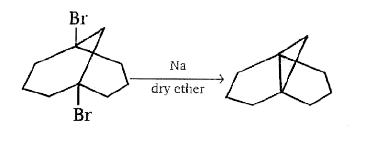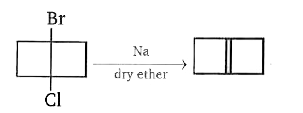Which of the following sequence represent a possible pathway in the production of a secretory protein ?
Rough ER → Secretory vesicle → Ribosomes → Golgi apparatus
Ribosomes → Rough ER → Golgi apparatus→ Secretory vesicle
Secretory vesicle → Golgi apparatus → Ribosomes → Rough ER
Rough ER → Ribosomes→ Secretory vesicle → Golgi apparatus
The correct Answer is:D
To determine the pathway for the production of a secretory protein, we can break down the process into several key steps. Here’s a step-by-step solution:
Step 1: Transcription in the Nucleus
The process begins in the nucleus where DNA is transcribed into messenger RNA (mRNA). This mRNA carries the genetic information needed for protein synthesis.
Hint: Remember that transcription occurs in the nucleus, where DNA is converted to mRNA.
Step 2: mRNA Transport to the Cytoplasm
Once the mRNA is synthesized, it exits the nucleus and enters the cytoplasm. This is essential for the next step, where translation occurs.
Hint: Think about how mRNA must leave the nucleus to reach the site of protein synthesis.
Step 3: Translation at the Ribosomes
In the cytoplasm, ribosomes read the mRNA sequence and translate it into a polypeptide chain (protein). This occurs on the rough endoplasmic reticulum (RER), which is studded with ribosomes.
Hint: The rough ER is key for protein synthesis due to its ribosomes.
Step 4: Protein Folding and Modification
As the polypeptide is synthesized, it enters the lumen of the rough ER where it begins to fold and undergo post-translational modifications.
Hint: Proteins need to fold correctly to function properly, and this happens in the ER.
Step 5: Packaging into Secretory Vesicles
Once properly folded, the proteins are packaged into secretory vesicles that bud off from the rough ER. These vesicles transport the proteins to the Golgi apparatus.
Hint: Packaging into vesicles is crucial for transporting proteins to their next destination.
Step 6: Transport to the Golgi Apparatus
The secretory vesicles fuse with the Golgi apparatus, where further modifications and sorting of the proteins occur. The Golgi apparatus processes the proteins and prepares them for secretion.
Hint: The Golgi apparatus acts like a post office, modifying and sending proteins to their final destinations.
Step 7: Final Packaging and Secretion
Finally, the proteins are packaged into new secretory vesicles that bud off from the Golgi apparatus. These vesicles then transport the proteins to the cell membrane, where they can be secreted outside the cell.
Hint: The final step involves vesicles fusing with the cell membrane to release proteins outside.
Conclusion
The correct sequence for the pathway in the production of a secretory protein is:
1. Ribosomes
2. Rough Endoplasmic Reticulum (RER)
3. Golgi Apparatus
4. Secretory Vesicles
Thus, the answer to the question is Option B: Ribosomes → Rough ER → Golgi Apparatus → Secretory Vesicles.
The process begins in the nucleus where DNA is transcribed into messenger RNA (mRNA). This mRNA carries the genetic information needed for protein synthesis.
Once the mRNA is synthesized, it exits the nucleus and enters the cytoplasm. This is essential for the next step, where translation occurs.
In the cytoplasm, ribosomes read the mRNA sequence and translate it into a polypeptide chain (protein). This occurs on the rough endoplasmic reticulum (RER), which is studded with ribosomes.
As the polypeptide is synthesized, it enters the lumen of the rough ER where it begins to fold and undergo post-translational modifications.
Once properly folded, the proteins are packaged into secretory vesicles that bud off from the rough ER. These vesicles transport the proteins to the Golgi apparatus.
The secretory vesicles fuse with the Golgi apparatus, where further modifications and sorting of the proteins occur. The Golgi apparatus processes the proteins and prepares them for secretion.
Finally, the proteins are packaged into new secretory vesicles that bud off from the Golgi apparatus. These vesicles then transport the proteins to the cell membrane, where they can be secreted outside the cell.
The correct sequence for the pathway in the production of a secretory protein is:
1. Ribosomes
2. Rough Endoplasmic Reticulum (RER)
3. Golgi Apparatus
4. Secretory Vesicles
Similar Questions
Knowledge Check
Which of the following reactions represents major products?
A B
B C
C D
D
Which of the following sequences is truly a systemic circulation pathway ?
ARight ventricle → Pulmonary aorta → Tissues → Pulmonary veins → Left auricleBRight auricle → Left ventricle → Aorta → Tissues → Veins → Right auricleCLeft auricle → Left ventricle → Pulmonary aorta → Tissues → Right auricleDLeft auricle → Left ventricle → Aorta → Areries → Tissues → Veins → Right atriumWhich of the following does not represent major product of the reaction ?
A B
B C
C D
D
Which of the following sequence represents atomic number of only representative elements?
View SolutionWhich of the following is not an example of an anabolic pathway?
View Solutionwhich of the following combination represent a possibility of Erythroblastosis foetalis?
View SolutionWhich one of the following represents a palindromic sequence in DNA ?
View SolutionWhich one of the following represents a palindromic sequence in DNA ?
View Solution
